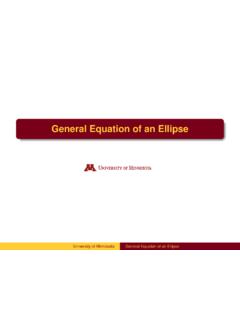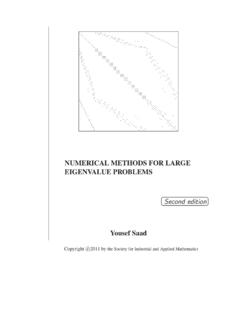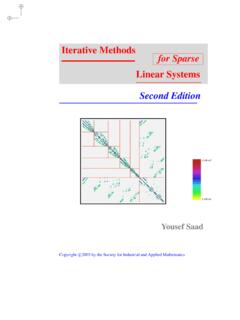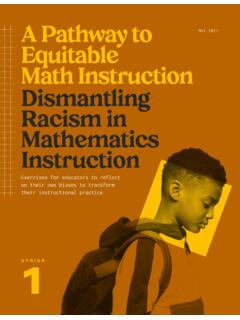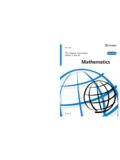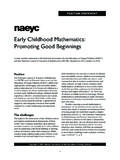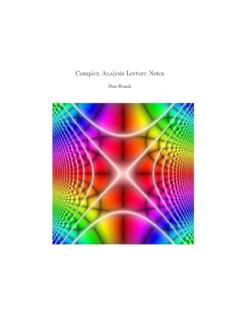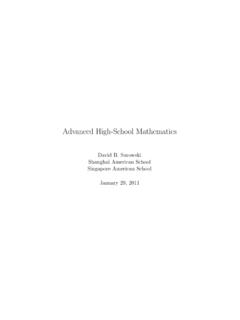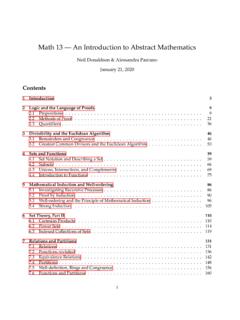Transcription of The Calculusof Variations - Math User Home Pages
1 The calculus of VariationsPeter J. OlverSchool of MathematicsUniversity of MinnesotaMinneapolis, MN olverContents1. Introduction.. 22. Examples of Variational Problems.. 2 Minimal Curves, Optics, and Geodesics .. 3 Minimal Surfaces .. 6 Isoperimetric Problems and Constraints .. 83. The Euler Lagrange Equation.. 9 The First Variation .. 9 Curves of Shortest Length Planar Geodesics .. 12 Minimal Surface of Revolution .. 13 The Brachistochrone Problem .. 16 The Fundamental Lemma .. 19A Cautionary Example .. 204. Boundary Conditions.. 22 Natural Boundary Conditions .. 22 Null Lagrangians .. 25 General Boundary Conditions .. 275. The Second Variation.. 306. Multi-dimensional Variational Problems.. 34 The First Variation and the Euler Lagrange Equations .. 35 References.. 393/21/211c 2021 Peter J. Olver1. principles form one of the most wide-ranging means of formulating math -ematical models governing the equilibrium configurations of physical systems.
2 Moreover,many popular numerical integration schemes such as the powerful finite element methodare also founded upon a minimization paradigm. In these notes, we will develop the basicmathematical analysis of nonlinear minimization principles on infinite-dimensional functionspaces a subject known as the calculus of Variations , forreasons that will be explainedas soon as we present the basic ideas. Classical solutions tominimization problems in thecalculus of Variations are prescribed by boundary value problems involving certain typesof differential equations, known as the associated Euler Lagrange equations. The math -ematical techniques that have been developed to handle suchoptimization problems arefundamental in many areas of mathematics, physics, engineering, and other these notes, we will only have room to scratch the surface of this wide ranging and livelyarea of both classical and contemporary history of the calculus of Variations is tightly interwoven with the history of math - ematics , [12].
3 The field has drawn the attention of a remarkable range of mathematicalluminaries, beginning with Newton and Leibniz, then initiated as a subject in its own rightby the Bernoulli brothers Jakob and Johann. The first major developments appeared inthe work of Euler, Lagrange, and Laplace. In the nineteenth century, Hamilton, Jacobi,Dirichlet, and Hilbert are but a few of the outstanding contributors. In modern times, thecalculus of Variations has continued to occupy center stage, witnessing major theoreticaladvances, along with wide-ranging applications in physics, engineering and all branches problems that can be analyzed by the calculus of Variations serve to char-acterize the equilibrium configurations of almost all continuous physical systems, rangingthrough elasticity, solid and fluid mechanics, electro-magnetism, gravitation, quantum me-chanics, string theory, and many, many others. Many geometrical configurations, such asminimal surfaces, can be conveniently formulated as optimization problems.
4 Moreover,numerical approximations to the equilibrium solutions of such boundary value problemsare based on a nonlinear finite element approach that reducesthe infinite-dimensional min-imization problem to a finite-dimensional problem. See [21; Chapter 11] for full as the vanishing of the gradient of a function of severalvariables singles out thecritical points, among which are the minima, both local and global, so a similar func-tional gradient will distinguish the candidate functionsthat might be minimizers of thefunctional. The finite-dimensional calculus leads to a system of algebraic equations for thecritical points; the infinite-dimensional functional analog results a boundary value prob-lem for a nonlinear ordinary or partial differential equation whose solutions are the criticalfunctions for the variational problem. So, the passage fromfinite to infinite dimensionalnonlinear systems mirrors the transition from linear algebraic systems to boundary Examples of Variational best way to appreciate the calculus of Variations is by introducing a few concreteexamples of both mathematical and practical importance.
5 Some of these minimization3/21/212c 2021 Peter J. OlverFigure Shortest Path is a Straight played a key role in the historical development of the subject. And they stillserve as an excellent means of learning its basic Curves, Optics, and GeodesicsTheminimal curve problemis to find the shortest path between two specified its simplest manifestation, we are given two distinct pointsa= (a, ) andb= (b, ) in the planeR2,( )and our task is to find the curve of shortest length connectingthem. Obviously , as youlearn in childhood, the shortest route between two points isa straight line; see Figure , then, the minimizing curve should be the graph of the particular affinefunction y=c x+d= b a(x a) + ( )that passes through or interpolates the two points. However, this commonly accepted fact that ( ) is the solution to the minimization problem is, upon closer inspec-tion, perhaps not so immediately obvious from a rigorous mathematical us see how we might formulate the minimal curve problem ina mathematicallyprecise way.
6 For simplicity, we assume that the minimal curve is given as the graph ofa smooth functiony=u(x). Then, the length of the curve is given by the standard arclength integralJ[u] =Zbap1 +u (x)2dx,( )where we abbreviateu =du/dx. The functionu(x) is required to satisfy the boundaryconditionsu(a) = ,u(b) = ,( )in order that its graph pass through the two prescribed points ( ). The minimal curveproblem asks us to find the functiony=u(x) that minimizes the arc length functional We assume thata6=b, , the pointsa,bdo not lie on a common vertical 2021 Peter J. Olver( ) among all reasonable functions satisfying the prescribed boundary conditions. Thereader might pause to meditate on whether it is analyticallyobvious that the affine function( ) is the one that minimizes the arc length integral ( )subject to the given boundaryconditions. One of the motivating tasks of the calculus of Variations , then, is to rigorouslyprove that our everyday intuition is indeed , the word reasonable isimportant.
7 For the arc length functional ( ) tobe defined, the functionu(x) should be at least piecewise C1, , continuous with apiecewise continuous derivative. Indeed, if we were to allow discontinuous functions, thenthe straight line ( ) does not, in most cases, give the minimizer. Moreover, continuousfunctions which are not piecewise C1need not have a well-defined arc length. The moreseriously one thinks about these issues, the less evident the obvious solution before you get too worried, rest assured that the straight line ( ) is indeed the trueminimizer. However, a fully rigorous proof of this fact requires a careful development ofthe mathematical machinery of the calculus of closely related problem arises in geometrical optics. Theunderlying physical principle,first formulated by the seventeenth century French mathematician Pierre de Fermat, isthat, when a light ray moves through an optical medium, it travels along a path thatminimizes the travel time.
8 As always, Nature seeks the most economical solution. Inan inhomogeneous planar optical medium, the speed of light,c(x, y), varies from point topoint, depending on the optical properties. Speed equals the time derivative of distancetraveled, namely, the arc length of the curvey=u(x) traced by the light ray. Thus,c(x, u(x)) =dsdt=p1 +u (x) from start to finish, we conclude that the total travel time along the curve isequal toT[u] =ZT0dt=Zbadtdxdx=Zbap1 +u (x)2c(x, u(x))dx.( )Fermat s Principlestates that, to get from pointa= (a. ) to pointb= (b, ), the lightray follows the curvey=u(x) that minimizes this functional subject to the boundaryconditionsu(a) = ,u(b) = ,If the medium is homogeneous, , a vacuum , thenc(x, y) cis constant, andT[u] isa multiple of the arc length functional ( ), whose minimizers are the obvious straightlines traced by the light rays. In an inhomogeneous medium, the path taken by thelight ray is no longer evident, and we are in need of a systematic method for solving theminimization problem.
9 Indeed, all of the known laws of geometric optics, lens design,focusing, refraction, aberrations, etc., will be consequences of the geometric and analyticproperties of solutions to Fermat s minimization principle, [3]. Assuming time = money! In the absence of gravitational effects due to general 2021 Peter J. OlverabFigure on a minimization problem of a similar ilk is to construct thegeodesicson a curvedsurface, meaning the curves of minimal length. Given two pointsa,blying on a surfaceS R3, we seek the curveC Sthat joins them and has the minimal possible example, ifSis a circular cylinder, then there are three possible types of geodesiccurves: straight line segments parallel to the center line;arcs of circles orthogonal to thecenter line; and spiral helices, the latter illustrated in Figure 2. Similarly, the geodesicson a sphere are arcs of great circles. In aeronautics, to minimize distance flown, airplanesfollow geodesic circumpolar paths around the globe.
10 However, both of these claims are inneed of mathematical order to mathematically formulate the geodesic minimization problem, we suppose,for simplicity, that our surfaceS R3is realized as the graph of a functionz=F(x, y).We seek the geodesic curveC Sthat joins the given pointsa= (a, , F(a, )),andb= (b, , F(b, )),lying on the us assume thatCcan be parametrized by thexcoordinate, in the formy=u(x),z=v(x) =F(x, u(x)),where the last equation ensures that it lies in the surfaceS. In particular, this requiresa6=b. The length of the curve is supplied by the standard three-dimensional arc length Cylinders are not graphs, but can be placed within this framework by passing to cylindricalcoordinates. Similarly, spherical surfaces are best treated in spherical coordinates. In differentialgeometry, [5], one extends these constructions to arbitrary parametrized surfaces and higherdimensional 2021 Peter J. Olverintegral. Thus, to find the geodesics, we must minimize the functionalJ[u] =Zbas1 + dydx 2+ dzdx 2dx=Zbas1 + dudx 2+ F x(x, u(x)) + F u(x, u(x))dudx 2dx,( )subject to the boundary conditionsu(a) = , u(b) =.
